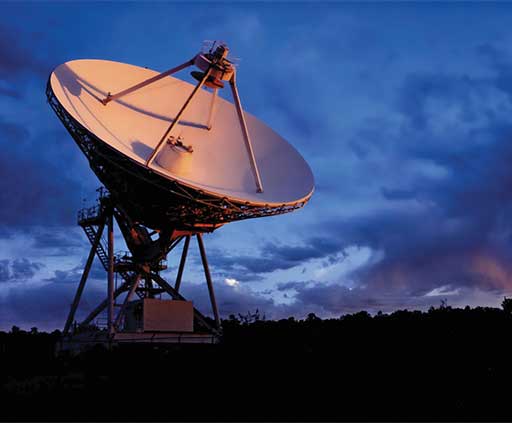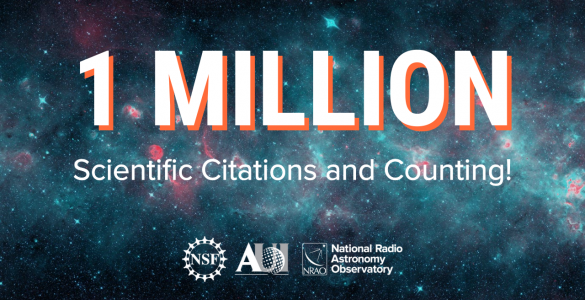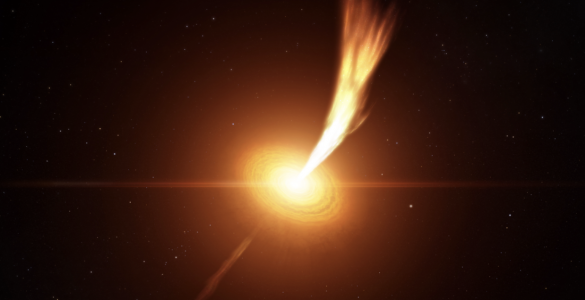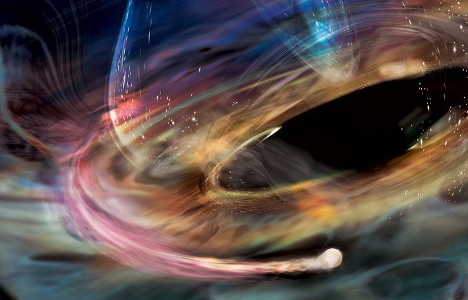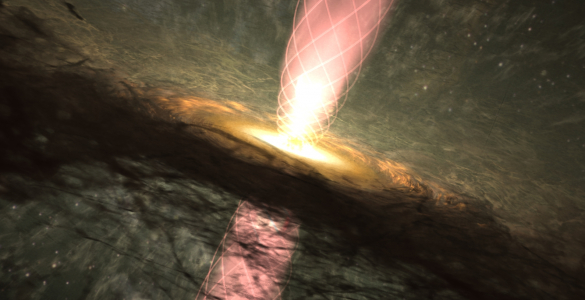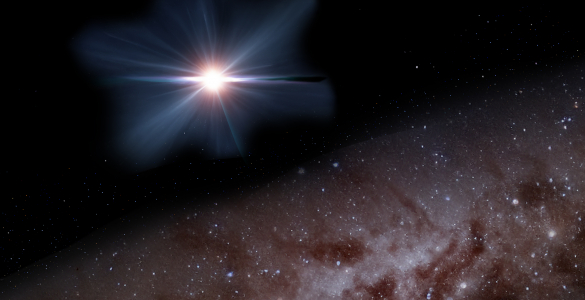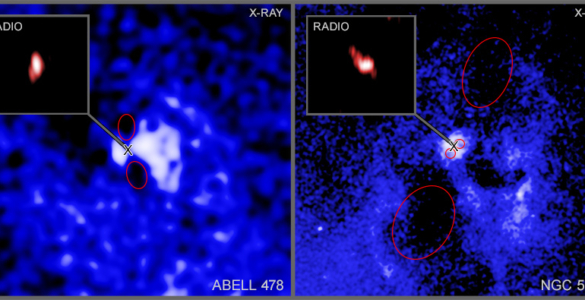Astronomers using the National Science Foundation’s Very Long Baseline Array (VLBA) radio telescope have found the closest pair of supermassive black holes ever discovered in the Universe — a duo of monsters that together are more than 150 million times more massive than the Sun and closer together than the Earth and the bright star Vega.
“These two giant black holes are only about 24 light-years apart, and that’s more than 100 times closer than any pair found before,” said Cristina Rodriguez, of the University of New Mexico (UNM) and Simon Bolivar University in Venezuela. Black holes are concentrations of mass with gravity so strong that not even light can escape them.
The black hole pair is in the center of a galaxy called 0402+379, some 750 million light-years from Earth. Astronomers presume that each of the supermassive black holes was once at the core of a separate galaxy, then the two galaxies collided, leaving the black holes orbiting each other. The black holes orbit each other about once every 150,000 years, the scientists say.
“If two black holes like these were to collide, that event would create the type of strong gravitational waves that physicists hope to detect with instruments now under construction,” said Gregory Taylor, of UNM. The physicists will need to wait, though: the astronomers calculate that the black holes in 0402+379 won’t collide for about a billion billion years.
“There are some things that might speed that up a little bit,” Taylor remarked.
An earlier VLBA study of 0402+379, an elliptical galaxy, showed the pair of radio-wave-emitting objects near its core. Further studies using the VLBA and the Hobby-Eberly Telescope in Texas, revealed that the pair of objects is indeed a pair of supermassive black holes.
“We needed the ultra-sharp radio ‘vision’ of the VLBA, particularly at the high radio frequencies of 22 and 43 GigaHertz, to get the detail needed to show that those objects are a pair of black holes,” Taylor said. The VLBA is a continent-wide system of ten radio-telescope antennas. It provides the greatest ability to see fine detail, called resolving power, of any telescope in astronomy.
“Astronomers have thought for a long time that close pairs of black holes should result from galaxy collisions,” Rodriguez said. Still, finding them has proven difficult. Until now, the closest confirmed pairs of supermassive black holes were at least 4,500 light-years apart. Pairs of smaller black holes, each only a few times the mass of the Sun, have been found in our own Milky Way Galaxy, but 0402+379 harbors the pair of supermassive black holes that are the closest to each other yet found.
Galactic collisions are common throughout the Universe, and astronomers think that the binary pairs of supermassive black holes that result can have important effects on the subsequent evolution of the galaxies. In a number of predicted scenarios, such giant pairs of black holes will themselves collide, sending gravitational waves out through the Universe. Such gravitational waves could be detected with a proposed joint space mission between NASA and the European Space Agency, the Laser Interferometer Space Antenna.
“Such black-hole collisions undoubtedly are important processes, and we need to understand them. Finding ever-closer pairs of supermassive black holes is the first step in that process. Even finding one such system has dramatically changed our expectations, and informed us about what to look for,” Taylor said. Taylor and his collaborators are currently using the VLBA to carry out the largest survey of compact radio-emitting objects ever undertaken, in the hope of finding more such pairs.
Rodriguez and Taylor worked with Robert Zavala of the U.S. Naval Observatory, Allison Peck of the SubMillimeter Array of the Harvard- Smithsonian Center for Astrophysics, Lindsey Pollack of the University of California at Santa Cruz, and Roger Romani of Stanford University. Their results have been accepted for publication in the Astrophysical Journal.
The National Radio Astronomy Observatory is a facility of the National Science Foundation, operated under cooperative agreement by Associated Universities, Inc.
Contact:
Dave Finley, Public Information Officer
Socorro, NM
(505) 835-7302
dfinley@nrao.edu






